BY ERIC G. BACHMAN
Gathering information for fire department preplanning is challenging. Limited time and staff and sometimes a lack of facility cooperation are key factors, and preplanning can be time-intensive. But as onerous a task as it is, applying information-gathering practices learned back when developing high school term papers can yield great benefits.
Anyone who wants to learn more about a topic, a person, or a venue can seek, observe, and study open sources of information-i.e., those available to the public, such as a facility’s Web site. Open sources can yield a plethora of facility-specific information and basic intelligence. Before engaging on-site representatives to preplan the facility, fire department staff should do its homework by studying facility-, process-, or hazard-specific open sources.
Preplanning using only open sources does not constitute comprehensive preparedness, but it is one part of a balanced preparedness program. There is no substitute for obtaining detailed facility knowledge than through physically surveying it inside and out and talking to operational personnel. Intelligence gathering through open sources, however, does have its place in organizational preparedness. One benefit is that fire department personnel can gain a basic understanding of operations that they would otherwise only obtain on a facility visit. Understanding basic facility operations before engaging facility personnel may spur research into the associated product or process sources that will be valuable when physically reviewing facility internals such as layout and operational emergency procedures. Open resources are numerous and varied, but the most common and readily accessible include electronic media and periodicals.
Internet
A simple topical Internet search can yield a plethora of resource links, but carefully consider the source’s credibility and accuracy.
Web Sites
An official facility Web site, especially with a vague nondescriptive corporate name ending in Enterprises, Industries, Distributors, and Logistics, offers little or no clue as to the processes or potential hazards that exist there. Although other names may seem to be informative, don’t be complacent about degree of hazard. A business in my area was well-known for manufacturing closed-circuit security cameras. But only after a review of its Web site did its technological diversity embracing digital imaging, night vision, and nuclear instrumentation become known. This spurred further research into these technologies to identify supporting operations, processes, hazards, and challenges the site might present.
In addition to processes information, Web sites may provide illustrations and maps. The Web site of a large complex, such as a college campus, a shopping center, a convention center, or a hotel, will often have a map link for visitor use. Other facilities may include more detailed layouts and floor plans. Photo 1 shows a 600,000-square-foot warehouse, formerly used as a ceiling and floor tile distributor. Vacant for many years, it has been repurposed and renovated. Now, it is promoted as the largest indoor sports complex in the country and home to the United States Women’s Olympic Field Hockey Team. This once open-plan warehouse is continuously evolving with new attractions and features. Once a site operated by a dozen or so employees, it now hosts hundreds, even thousands, of visitors and patrons daily, presenting challenges to the local emergency services. Its Web site (www.spookynooksports.com) offers layout drawings and other data that the local emergency services can use to plan for possible incident scenarios and operational strategies.
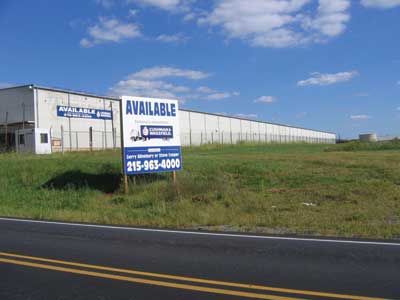 |
| Photos 1-16 by author. |
As mentioned earlier, nothing replaces physically touring and observing internal elements. However, the Web site drawings provide a layout vantage that first-due and mutual-aid departments may find useful.
Web sites may identify key staff and contact information that can be used to initiate preplanning efforts and certain operational details such as its hours of operation. Occupant information including census data or disposition types may be available, which is beneficial in contemplating potential search and rescue operations and resource needs.
Additionally, Web sites that list materials used, sold, or manufactured are beneficial for identifying physical and chemical properties. This, too, may aid chemical-specific research of material safety data sheets (MSDSs) as well as aid in contemplating incident management strategies (www.kirbyagri.com/products.htm). Web sites can be a bounty of information.
Peer/Regulatory Web Sites
Explore peer and regulatory Web sites to identify issues related to situations or venues similar to those in your locale. The Chemical Safety Board (CSB), for example, conducts root-cause investigations of chemical accidents at fixed industrial facilities, identifying contributory factors and preventive measures that might likely have averted the accident. The CSB Web site (http://www.csb.gov/) provides free postincident resources in PDF reports and video illustrations that describe what happened and why it happened and lists future preventive recommendations. Reviewing the list of incidents and venues may reveal similarities to a facility protected by your fire department. This can lead to further research for lessons learned.
Newspapers
Although not as popular as they once were, print newspapers can be a valuable intelligence tool. Many print-media outlets have archives that may include articles on past incidents that may prove beneficial to newer fire department members or staff.
Newspapers usually publish a business section that highlights new business operations and activities, which may prove beneficial in fast-growing areas. Articles on new businesses may include information on hours of operation, an employee census, and other site- or product-specific information. Photographs can provide insight into what the fire department might expect.
Technical Reports
State and federal agency reports are another source of data for specific industries. For example, the Occupational Safety and Health Administration (OSHA) may publish facility-specific reports on investigations into, violations found at, or citations issued to a facility during an inspection or for noncompliance issues revealed after a workplace fatality. A review of these reports by fire department officials may reveal process hazards inherent at certain industries similar to those protected locally.
A student of the fire service will study the National Institute for Occupational Safety and Health’s (NIOSH) Fire Fighter Fatality Investigation and Prevention Program’s line-of-duty death (LODD) investigative reports (http://www.cdc.gov/niosh/fire/) and the United State Fire Administration’s technical reports. Reviewing reports of incidents that occurred at venues similar to locally protected sites may heighten awareness to site-specific challenges. The disposition of the affected fire department or the region in which it occurred should not curtail review of LODD reports. Some may see opposing characteristics-e.g., one involved a volunteer vs. a career department or one occurred on the East vs. the West Coast-as making the incident inapplicable to local conditions. Contributing factors are often venue-specific-e.g., facility operations or internal systems. Could an industrial laundry facility fire in California to which a career fire department responded have similar inherent characteristics as a laundry on the East Coast that a small, all-volunteer fire department protects? Most likely, yes.
E-Source Convenience
The examples above are “behind-the-desk” open sources available at your fingertips from the comfort of your home or fire station office, at any time of the day or night. This type of intelligence gathering is convenient, cost-effective, and noninvasive. Although some may become comfortable and complacent with information collected from these sources, electronic and print material intelligence is only a piece of the preparedness puzzle.
Intelligence Culture
I cannot overstress the importance of physically gathering fire district intelligence, but the efforts dedicated to it are at times not proportionate to its importance. Comprehensive intelligence gathering, among other fire personnel tasks, may not have high priority. Some leaders and personnel may perceive intelligence gathering/preplanning as more of a chore rather than a critical operational function. In any area in which personnel see little value in a particular activity, they will offer excuses to justify noncompliance-e.g., the lack of time, money, or staffing. However, effective leaders and progressive management will creatively develop strategies for accomplishing goals.
Open-source examples are broad and readily available. As beneficial as “behind-the-desk” electronic sources can be, an effective preparedness program requires time commitments for physical surveillance. Preplanning and preincident intelligence include physically visiting a facility; engaging the facility’s personnel; and collecting, analyzing, and preparing information for postdispatch use. However, cost-effective and convenient practices are available to collect some basic, yet incident-critical, facility information when you have limited time and staff.
Windshield Intelligence
An effective means for gathering some basic intelligence, especially with time constraints, is promoting what I call “Two-Minute Intel” (TMI). Take two minutes to drive to and from another activity and survey a venue through the windshield, noting obvious conditions and challenging circumstances. This may reveal essential information to contemplate preincident for postdispatch application. Conduct TMI during and after facility operating hours to identify special conditions and challenges. TMI includes a windshield survey (WS) and a walk-around (WA). You could initiate a WS en route to a training session, returning from a call, traveling to and from refueling or maintenance, or in conjunction with other activities. You can identify many incident-influencing elements.
Access
Use a logical approach as you would at an emergency to carry out your TMI through a WS. You can enhance preincident size-up practice for postdispatch application. “Hidden in plain sight” all too often describes what initial arriving units may see. In confronting an emergency, extreme fire conditions, reports of trapped victims, and a host of other stressors can affect your situational awareness. Tunnel vision may preclude recognition of subtle, yet important, factors or features, but when viewed in a nonemergency setting, things may more readily stand out.
Access during and after operating hours is one immediate consideration. TMI can reveal accessibility challenges affecting apparatus placement and equipment and personnel deployment. If apparatus and personnel cannot effectively access a site, the incident will likely quickly worsen.
Answer such questions as the following: Can you get to the facility? How close can fire apparatus get to a facility? Will water supply or attack line deployment require extra-long hoselays? How and where can the truck company position for maximum effectiveness? A host of access challenges may include the facility physical setback from the road, the presence of a gate (photo 2), aesthetic landscape features, mature vegetation, overhead utility lines, and an active rail line (photo 3).
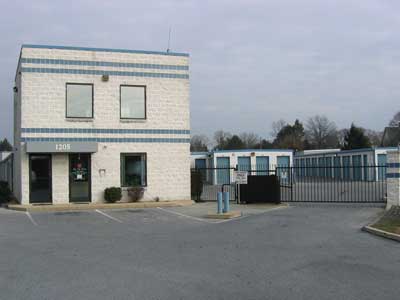
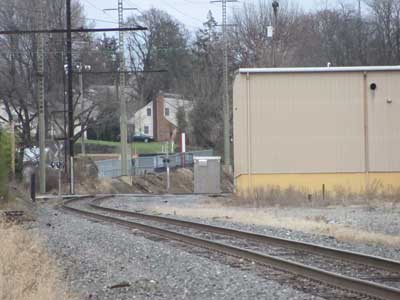
Arrangement
A second WS consideration is the facility’s arrangement, which can cause confusion. Assess preincident arrangement issues such as side references-i.e., which is side A, side B, side C, and side D. Although some facilities may be simple four-sided structures, others may comprised multiple buildings, including conveyances to other areas (a connecting or transitional corridor from an office to a manufacturing area) or have special-purpose areas (chemical storage and trash disposal). Arrangement does not just mean the facility footprint but also its height above and below grade.
Note other special features, conditions, or obstacles to consider applicable strategies and tactics. In photo 4, a windowless building presents access and ventilation challenges. Topography challenges to fire operations include extreme or subtle elevation presentations on different sides of the building. In photo 5, the building appears to be on one level at sides A and D. But in photo 6, the elevation of sides A and B is different. Here, too, preincident analysis is the time to discuss floor level assignments. These easily obtainable site circumstances can improve a fire department’s preincident preparedness program and provide staff with preresponse cues to correlate to postdispatch situations.
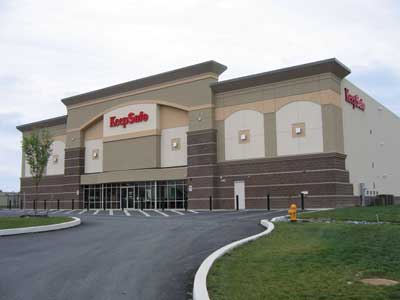

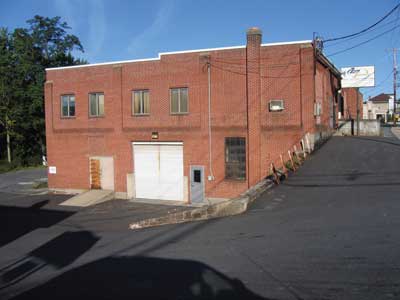
Condition
Another important item to assess during a WS is the building’s condition. Are there any obvious structural issues? Does it appear to be well-maintained? Exterior conditions may be a preview to interior conditions. Deteriorated mortar (photo 7), large cracks, or reinforcements (photo 8) are just a few examples. Such indications of structural compromise could mean rapid structural deterioration under fire conditions.

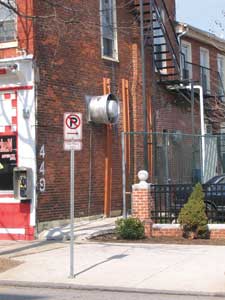
Hazards
A WS can identify use of hazardous commodities. This should heighten interest in learning the use of the material and preincident research of its chemical and physical properties. Are the containers like the hydrogen containers in photo 9 fixed, indicating the product is piped through the building? Or are they portable (photo 10), indicating they could be used anywhere in the building?
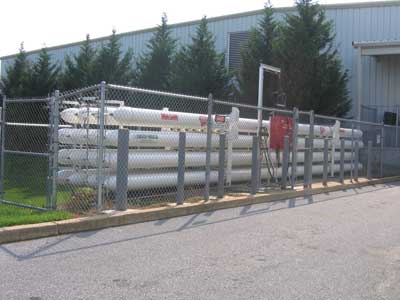

Exposures
A WS can help identify exposures, which you must assess since they may be less protected, more susceptible to catching fire, and contribute to an expanding incident. Most commonly, the exposures considered are nearby structures, but just as important are the environmental and infrastructure exposures. It is important to consider runoff and determine preincident the outfall of the storm drain.
Facility Infrastructure
In this article, infrastructure refers to utilities and built-in systems that facilitate normal site operations, such as electric, gas, water, and other services. Also included are support systems such as the ever-growing use of photovoltaic power, which could affect ventilation (photo 11), refuse systems, backup power units, and suppression systems. Although a WS may reveal that a utility or system exists, it does not provide a full picture of internal coverage or support. This should encourage investigation during formal preplanning.

Walk-Around
If time or public access to the exterior permits, replace the Two-Minute with a Ten-Minute by a WA. Like TMI-WS, this, too, can reveal incident critical information. Physically walking the perimeter of a structure can reveal features not easily recognized through the windshield.
Some facilities publish their operational hours on the front door, which indicate the general times of public occupancy. In some instances, the alarm company logo and contact number may be posted on the front door as well. This could be beneficial for after-hours contact. Observe caution with alarm company labels. Depending on the turnover in the building or its occupancies, the information may not be current or valid. The after-hour contacts listed also may not be current.
Review security measures and access doors, which help determine forcible entry needs and occupant egress from the structure. Evaluate access for challenges such as blocked-up egress points (photo 12), reinforcement, or special security devices that may require more invasive entry methods.
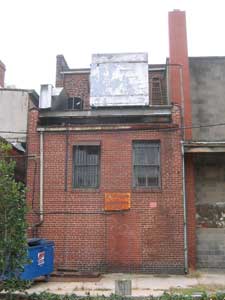
A WA in conjunction with a WS will allow personnel to identify the elements noted above. A WA allows a closer inspection that may reveal elements hidden in plain sight or concealed by other features such as vegetation. A WA may help in identifying the utility service types and number of users, such as multiple electric (photo 13) or gas service meters (photo 14).


A physical WA may identify fire suppression systems such as a post indicator valve (PIV), a wall PIV, a standpipe (photo 15), or a fire department connection (FDC). For certain conduits, such as an FDC, note the connection. Does the FDC present two 2½-inch siamese ports? Or is it a five-inch storz (photo 16) connection? Important details such as these must be effectively communicated to incoming units that will be expected to support the system.
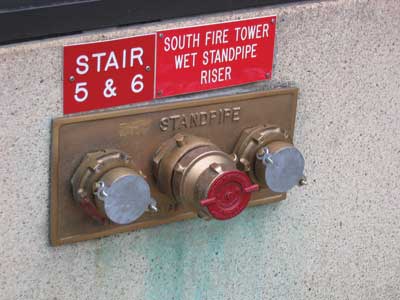
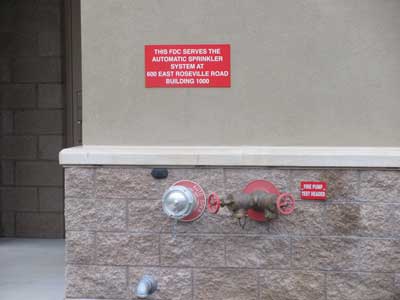
Evaluate housekeeping since it can indicate internal practices. How are items stored outside, and what is the disposal unit media?
The elements listed above are not exhaustive, but even basic information offers invaluable benefits regardless of the lack of detailed knowledge of internal floor plans, systems, and processes. There is no limit to the information that you can ascertain by walking around a facility.
Photographs
If fire department policies/procedures permit, take pre-incident exterior photos of the venue and specific challenging elements. Use them as training tools for company-level training and incorporate them into other preincident preparedness activities. Photographing certain critical features is useful for reinforcing or contemplating certain strategies and tactics.
Information Management/Security
The information collected should not be just written on a piece of paper or entered in a database without further analysis. Review it, and perform a comparative assessment against the fire department’s capabilities and vulnerabilities. This should galvanize further preincident cooperative preparedness efforts and enhance operations with facility staff. Use it to improve the safety of responding personnel.
As with any information source, organizations must practice appropriate operational security. Vulnerabilities of the facility or fire department should not be widely conveyed to those without a need to know. Ensure that all information is secured from unauthorized access.
Although basic, the concepts and suggestions of this article are nonetheless important and beneficial. Open sources are wide ranging, and you should determine which are legitimate and credible sources. Overwhelming and arduous as intelligence gathering and preplanning can be, the return on investment of a TMI by a WS or WA, whether it takes two or 10 minutes, will be tremendous. Regardless of the excuses offered for not engaging, ask yourself and the department leadership the following: In your district, what can you afford not to know about?
ERIC G. BACHMAN, CFPS, is a 32-year veteran of the fire service and a former chief of the Eden Volunteer Fire/Rescue Department in Lancaster County, Pennsylvania. He is the hazardous materials administrator for the County of Lancaster Emergency Management Agency and serves on the Local Emergency Planning Committee of Lancaster County. He is registered with the National Board on Fire Service Professional Qualifications as a fire officer IV, fire instructor III, hazardous materials technician, and hazardous materials incident commander. He has an associate degree in fire science and earned professional certification in emergency management through the state of Pennsylvania. He is also a volunteer firefighter with the West Hempfield (PA) Fire & Rescue Company.
Fire Engineering Archives

